
Resource Guide

To support the launch of the Education Equity Action Plan Coalition's (EEAPC) Black Studies curriculum, the EEAPC is building a Resource Guide for interested families, educators, and members of the general public who would like to connect further to the mission of Black Studies as the study of the world.
We are excited to bring this tool to communities in New York and hope that you will join us by spreading the word to potential contributors.
The goal of the Black Studies Resource Guide is to provide a repository and collection of organizations, businesses, locations, experiential learning opportunities, and recommended sources for inclusion in the curriculum, among other things, which are aligned with and contributing to the celebration of Black culture, stories and experiences. It will provide a location for people to find information about the living, breathing, everyday world of Black studies in the hum of New York City.
This guide aims to provide individuals, families, and educators with an opportunity to share their knowledge of New York City's social history. It also seeks to promote awareness of Black studies within the city. Citizen historians or interested parties can also use the guide to suggest the inclusion of particular sources in future updates of the Black Studies curriculum. The Black Studies Resource Guide will be housed on the EEAPC website. Our goal is to build out a comprehensive resource that is crowdsourced by the community at large.
New entries can be submitted by anyone who visits the website and completes the "New Entry" form. The EEAPC will then review and approve the submissions.
Participating organizations and businesses in the guide will be recognized with a physical or digital Black Studies badge, which will be displayed on their website or at in-person locations. The objective of this program is to promote the Black Studies curriculum of the EEAPC and provide a visual representation of how significant this subject is to our city.
-

Addisleigh Park Historic District
Addisleigh Park Historic District
Queens, NY, United States
The Addisleigh Park Historic District was one of New York City’s premier African-American neighborhoods by the early 1950s. Popular for its seclusion, quietude, space and beauty, many of its inhabitants were world-famous. The area would eventually become home to notable musicians and actors, such as Count Basie, Lena Horne, Ella Fitzgerald, Illinois Jacquet and James Brown, sports icons such as Jackie Robinson, Joe Louis, Roy Campanella and activists such as Percy Sutton. Count Basie would host community events at his home there, including a 1961 Juneteenth pool party. Today, the district often hosts free or low-cost educational panels and events.
-
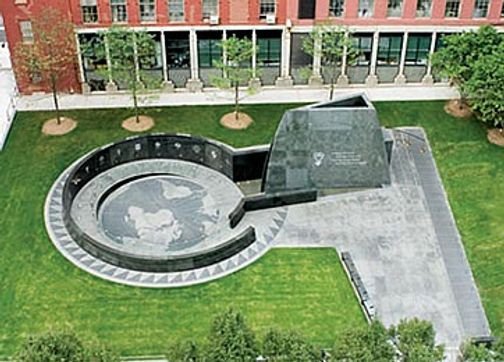
African Burial Ground National Monument
African Burial Ground National Monument
290 Broadway, New York City, New York 10007, United States
In 1991, preliminary archeological research excavation linked to a proposed building project on Broadway, in the area of Republican Alley, found intact human skeletal remains located 30 feet below the city’s street level. During initial work, the largest and most important archeological discovery was made: unearthing the "Negroes Burial Ground", a 6-acre area containing upwards of 15,000 intact skeletal remains. The rediscovery of the remains of some of the enslaved and free Africans who lived and worked in colonial New York between 1630 and 1795 altered the understanding and scholarship surrounding enslavement and its contribution to constructing New York City. Currently, the burial ground is the nation’s earliest and largest African burial ground rediscovered in the United States. This monument memorializes the lives of those men and women.
-

Alvin Ailey American Dance Theater
Alvin Ailey American Dance Theater
405 West 55th Street, New York City, New York 10019, United States
On March 30, 1958, Alvin Ailey and a group of young, Black modern dancers performed for the first time as members of Alvin Ailey American Dance Theater. Ailey and his group were pioneers, creating a space for Black and multiracial excellence in dance. To this day, the company represents the best of the best. Check out their dance experiences for kids and classes!
Open Hours: 8:30 AM-9 PM
-

Apollo Theater
Apollo Theater
253 West 125th Street, New York City, New York 10027, United States
One of the most iconic music halls ever, the Apollo Theater was built in 1913 and emerged as a hotspot for the Black arts community in Harlem in the 1930s. Today it continues to honor and promote the contributions of Black Americans to the arts, many of whom got their start at the Apollo Amateur Night, including, Ella Fitzgerald, Sarah Vaughan, Billie Holiday, Sammy Davis Jr., James Brown, Gladys Knight, Luther Vandross and Lauryn Hill! Check out their educational programs which can also be found on their website.
Open Hours: 10 AM - 6 PM
-

Audubon Ballroom
Audubon Ballroom
3940 Broadway, New York City, New York 10032, United States
The Audubon Ballroom and theater have served a wide variety of New York communities for vaudeville, films, political activism, religious services and cultural events. It is also well known as the site of the founding of the Organization of Afro-American Unity (OAAU), and where weekly meetings were held. It was after an OAAU meeting in 1965, that Malcolm X was assassinated. In 2005, it became the location of the Malcolm X and Dr. Betty Shabazz Memorial and Educational Center.
-

Black Spectrum Theater
Black Spectrum Theater
177-01 Baisley Boulevard, Queens, New York 11434, United States
In 1970, Carl Clay, a playwright, director and filmmaker, founded Black Spectrum Theatre Company as a traveling theatrical troupe. Beginning with performances in churches, as well as homes of actors and friends, the state-of-the-art theater now hosts stage productions, films and performing arts events.
Open Hours: 10 AM-6 PM
-

BlackPast
BlackPast
Seattle, WA, United States
BlackPast, a fully digital resource based in Seattle, WA, is dedicated to providing reliable information on the history of Black people across the globe, especially in North America. The goal is to promote a greater understanding of our common human experience through knowledge of the diversity of the Black experience and the ubiquity of the global Black presence.
-

Charlie Parker’s Townhouse
Charlie Parker’s Townhouse
151 Avenue B, New York City, New York 10009, United States
Built in 1849, this building was home to the legendary alto saxophonist, Charlie Parker, Jr. (aka Bird), from 1950-l954. With Chan Richardson and their three children, Parker occupied the ground floor apartment of this Gothic Revival-style rowhouse. At the height of his career, he achieved considerable success and was known internationally as the co-founder of bebop, the modern jazz style that he and trumpeter Dizzy Gillespie created in New York City in the mid-1940s.
-
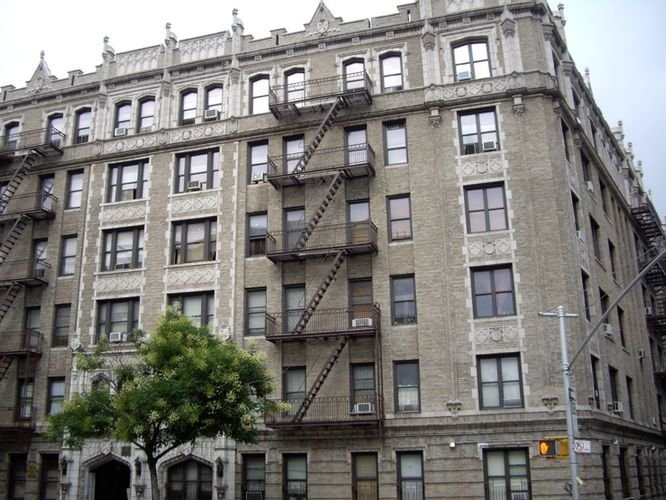
Duke Ellington House
Duke Ellington House
935 Saint Nicholas Avenue, New York City, New York 10032, United States
Duke Ellington was already a nationally well-known musician when he moved into Apartment A4 in this building, in 1939. While there, he wrote a number of his most important compositions, including Black, Brown and Beige. Ellington's music and personal style have had a profound impact on African-American culture in addition to overall American and global culture.
-

Dyckman Farmhouse
Dyckman Farmhouse
4881 Broadway, New York City, New York 10034, United States
Dyckman Farmhouse Museum, the last farmhouse in Manhattan, is a vital cultural asset in New York City. It is situated in a half-acre park in the Inwood neighborhood, high above the corner of Broadway at 204th Street. The Dutch Colonial-style farmhouse was built on this site in 1784 and was home to the Dyckman family for almost a century. It opened as a museum in 1916 and continues to serve the community to this day, representing an extraordinary reminder of early Manhattan and an important part of its diverse Inwood neighborhood.
Open Hours 12 PM-4 PM on Fri, 10 AM-4 PM on Sat
-
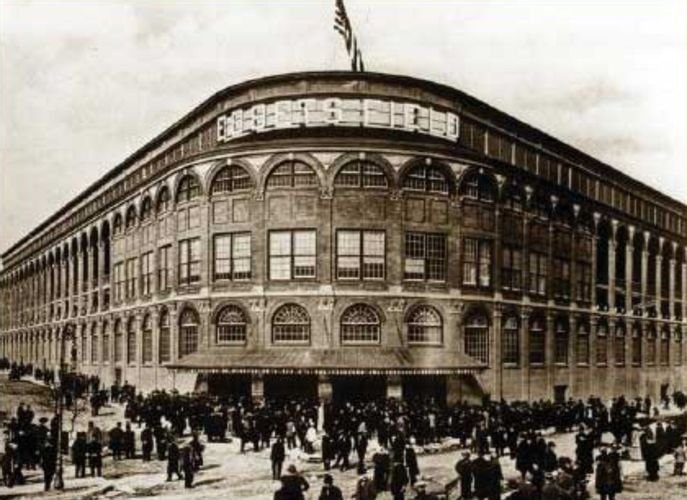
Ebbets Field
Ebbets Field
55 Sullivan Place, Brooklyn, New York 11225, United States
Ebbets Field was a Major League Baseball stadium in the Flatbush section of Brooklyn, New York, sitting at the location of the current Ebbets Field Apartments. It is well known for having been the home of the Brooklyn Dodgers baseball team (1913–1957). It was the field on which Jackie Robinson became the first Black man to play in Major League Baseball, on April 11, 1947. It was also home to five professional football teams, including three NFL teams (1921–1948).
-

Hotel Theresa
Hotel Theresa
2070 Adam Clayton Powell Junior Boulevard, New York City, New York 10027, United States
Hotel Theresa was built in 1919 and represented a vibrant center of African American social, political and cultural life starting in 1937 when it was bought by Love B. Woods, who ended its segregation policy. The hotel hosted athletes, businessmen, artists and activists, and even housed Malcolm X’s Organization of African Unity. Its detailed facade was created especially for the building, which was rare during a time when architects relied more on pre-made pieces.
-

Hunts Point Slave Burial Ground
Hunts Point Slave Burial Ground
Drake Park South, The Bronx, New York 10474, United States
In 2010, the Museum of the City of New York published online versions of more than 50,000 historic photos of New York City, including a haunting image from approximately 1910, entitled “Slave Burying Ground”. The only other information available about the photo was that it was taken at "Hunts Point Road" -- a street that no longer exists. Local history teachers wanted to know more, sparking a process that is still unfolding today. This website provides information on the project to honor those whose remains are buried there.
-

Jean-Michel Basquiat’s Studio
Jean-Michel Basquiat’s Studio
57 Great Jones Street, New York City, New York 10012, United States
In 1983, the boundary-breaking artist Jean-Michel Basquiat, rented an apartment and studio space in New York City from his friend and mentor, Andy Warhol. Basquiat would go on to live and work at the property located in the Bowery, until his death, in 1988.
-

Langston Hughes House
Langston Hughes House
20 East 127th Street, New York City, New York 10035, United States
The African-American poet Langston Hughes, one of the most prominent figures of the Harlem Renaissance, lived at 20 East 127th Street for the last two decades of his life, on the top floor of a brownstone row house. There he wrote Montage of a Dream Deferred and I Wonder as I Wander. Open to the public, this space is also home to the I, Too, Arts Collective, a non-profit committed to nurturing creativity within underrepresented communities offering poetry salons, workshops and affordable workspace.
-
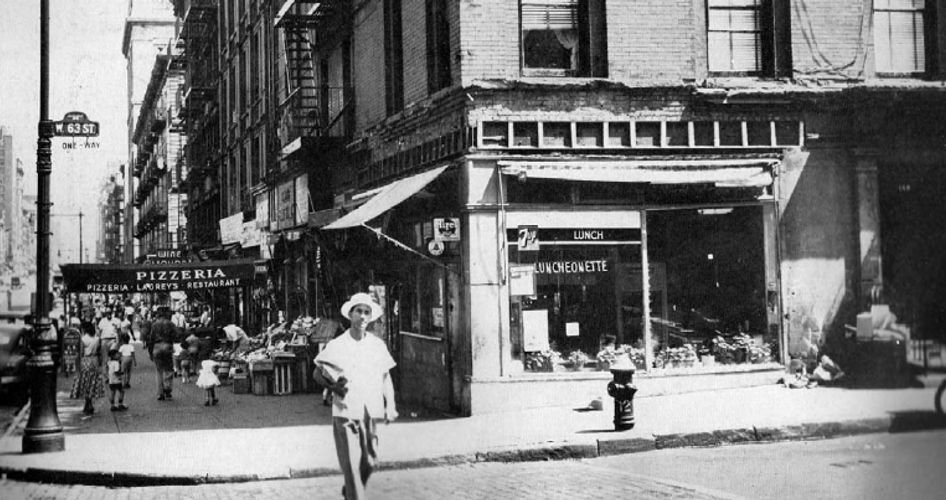
Legacies of San Juan Hill at the Lincoln Center
Legacies of San Juan Hill at the Lincoln Center
Manhattan, NY, United States
Legacies of San Juan Hill is a digital and in-person exhibit at the Lincoln Center which aims to explore the largely working-class Manhattan neighborhoods that existed in and around the area where Lincoln Center was built in the 1950s and 1960s. A huge swath of the area, home to more than 7,000 families and 800 businesses by mid-century, was razed in the 1950s as part of the Lincoln Square Development Plan. One of many “urban renewal” programs across the country, the Plan replaced existing residential and commercial buildings with a series of superblocks and other developments, including Fordham University, Lincoln Towers and Lincoln Center for the Performing Arts. Lincoln Center is committed to interrogating our role in this history, too long ignored, and building a more just and inclusive cultural home for all.
-

Lewis Latimer House
Lewis Latimer House
34-41 137th Street, Queens, New York 11354, United States
The Lewis Latimer House is a historic museum situated in Flushing, New York, dedicated to raising awareness about the fascinating life of Lewis Howard Latimer, who was an African American inventor, electrical pioneer, artist and much more! At the museum, you can learn about Latimer’s life and engage in local community events. Check out their virtual STEAM education opportunities for students of all ages and learn more about Latimer by visiting their website and through the virtual programming for students and adults available there!
Open Hours: 11 AM-5 PM
-

Louis Armstrong House Museum
Louis Armstrong House Museum
34-56 107th Street, Queens, New York 11368, United States
The Louis Armstrong House Museum (LAHM) sustains and promotes the cultural, historical, and humanitarian legacy of Louis Armstrong. The LAHM does this by preserving and interpreting Armstrong’s house and grounds, collecting and sharing archival materials that document Armstrong’s life and legacy, and developing programs for the public to educate, inspire and engage with contemporary artists.
Open Hours: 11 AM-3 PM
-
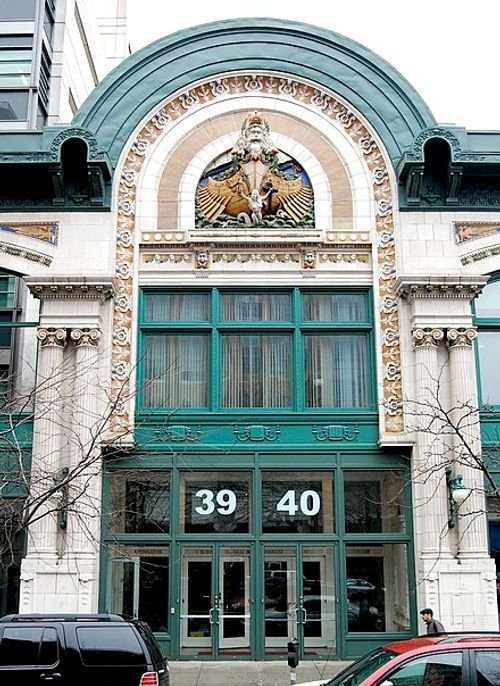
Malcolm X & Dr. Betty Shabazz Memorial, Educational and Cultural Center
Malcolm X & Dr. Betty Shabazz Memorial, Educational and Cultural Center
3940 Broadway, New York City, New York 10032, United States
The Malcolm X & Dr. Betty Shabazz Memorial and Educational Center is a cultural and educational institution that harnesses the legacies of Malcolm X and Dr. Betty Shabazz to incubate social, racial and global justice movements, as a living memorial and a space for education, culture and activism. The center can be reserved for community group activities and events.
Open Hours: 9 AM- 6 PM (appointment only)
-

Mother African Methodist Episcopal Zion Church
Mother African Methodist Episcopal Zion Church
140 West 137th Street, New York City, New York 10030, United States
The Mother African Methodist Episcopal Zion Church, also known as "Mother Zion", is located in the Harlem neighborhood of Manhattan. It is the oldest African-American church in New York City and the "mother church" of the African Methodist Episcopal (AME) Zion conference. Founded in 1796, famous worshipers have included Harriett Tubman and Frederick Douglass. It also served as a refuge along the underground railroad.
-

New York Amsterdam News Building
New York Amsterdam News Building
2293 Adam Clayton Powell Junior Boulevard, New York City, New York 10030, United States
The New York Amsterdam News was started more than a century ago, in 1909, with a $10 investment. It has become one of the most important Black newspapers in the country and today remains one of the most influential Black-owned and operated media businesses in the nation, if not the world. Since 1938, the newspaper has been published at this location.
-
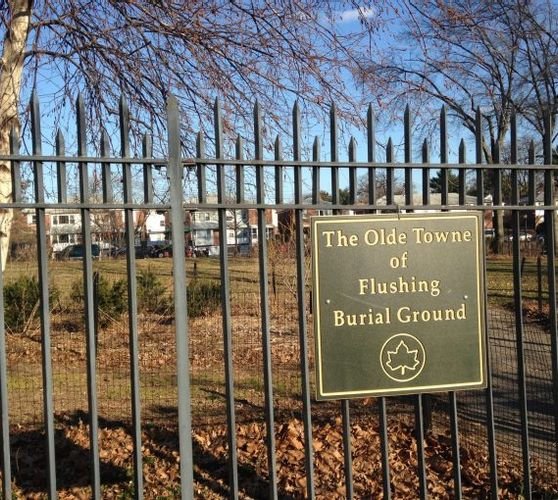
Olde Towne of Flushing Burial Ground
Olde Towne of Flushing Burial Ground
171st Street, Queens, New York 11365, United States
The Olde Towne of Flushing Burial Ground is a place for meditation, reflection, and remembrance. It is the final resting place of approximately 1,000 people, mostly African American and Native American, who were buried there between 1840 and the early 1900s. Overgrown for many years and used as a playground starting in the 1930s, it was recognized as a cemetery and rehabilitated to be a place of remembrance, in 2006.
-

Remember Liss Walking Tours
Remember Liss Walking Tours
Edgar Street, New York City, New York 10006, United States
Experience the story of a new founding figure for America named Liss -- and see New York City in a whole new way. You'll learn about the life of an enslaved Black woman seeking her freedom in a country fighting for its own while traveling through the very streets where she walked during the Revolutionary War. Come and participate in this unique walking tour, guided by an expert historian.
Open Hours: 10 AM-6 PM
-
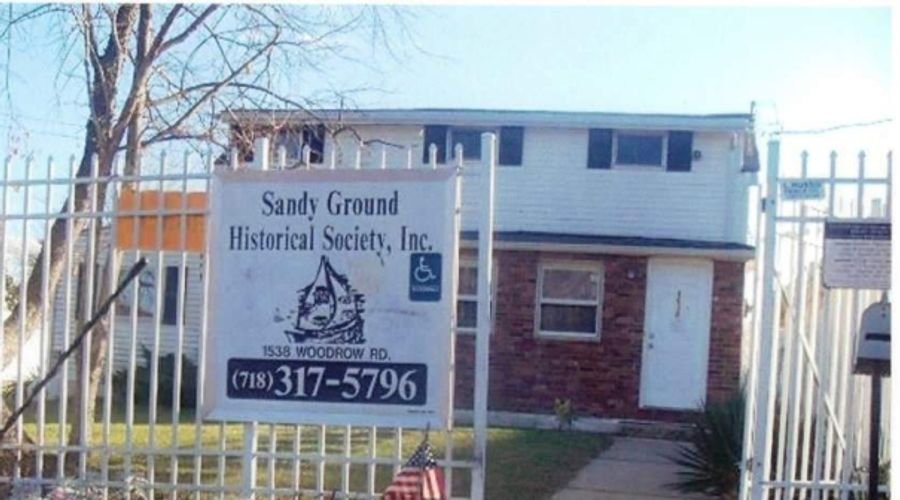
Sandy Ground
Sandy Ground
1538 Woodrow Road, Staten Island, New York 10309, United States
Sandy Ground is the oldest continuously inhabited free Black settlement in the United States. The descendants of the founding settlers still live in the community. Sandy Ground served as a stop on the Underground Railroad and is listed on the National and New York State Register of Historic Places.
-
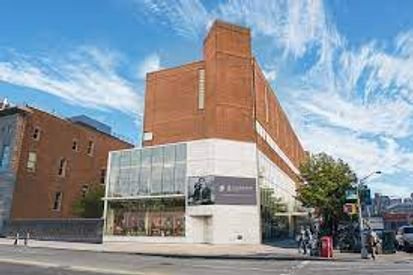
Schomburg Center for Research in Black Culture
Schomburg Center for Research in Black Culture
515 Malcolm X Boulevard, New York City, New York 10037, United States
The Schomburg Center for Research in Black Culture located in Harlem is one of The New York Public Library’s renowned research libraries. It is a world-leading cultural institution devoted to the research, preservation, and exhibition of materials focused on African American, African Diaspora and African experiences.
Open Hours: 10 AM-6 PM
-

Seneca Village
Seneca Village
Central Park, New York City, NY, United States
Before Central Park was established, the landscape along what is now a portion of the park (from West 82nd to West 89th Streets), was the site of Seneca Village. The village was a community of predominantly African Americans, many of whom owned property. At its largest, in 1855, the village had approximately 225 residents (roughly two-thirds African Americans, one-third Irish immigrants, and a small number of individuals of German descent). One of few African American enclaves at the time, Seneca Village allowed residents to live away from the more developed sections of downtown Manhattan, escaping the unhealthy conditions and discrimination residents faced there.
-
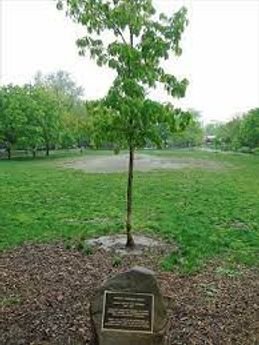
Shirley Chisholm Circle
Shirley Chisholm Circle
Kingston Avenue, Brooklyn, New York 11213, United States
The paved terrace of the Shirley Chisholm Circle is named after Shirley Anita St. Hill Chisholm (1924–2005). She was an educator, social rights advocate and celebrated politician known for her strong moral character. She wanted to be remembered as a woman who fought for change in the 20th century. As the first African American woman elected to the U.S. Congress and the first major party African American candidate to run for President of the United States, she was a tireless champion of equal rights and access to high-quality education. Growing up partly in Barbados, her experiences there profoundly influenced her focus on education. Chisholm also remained dedicated to her Crown Heights and Bedford-Stuyvesant roots throughout her career. The Shirley Chisholm commemorative stone and plaque rests on the west side of the circular terrace, alongside a tree planted in her honor. The plaza was dedicated in her name in 2016.
-

St. Philip’s Episcopal Church
St. Philip’s Episcopal Church
334 Macdonough Street, Brooklyn, New York 11233, United States
St. Philip’s Protestant Episcopal Church was the first African American Episcopal parish in New York City. It was also, at one time, one of the largest Christian congregations in the United States. The church originated from the meetings of a group of free African Americans, and formerly enslaved African Americans, who had been worshiping at the Trinity Church on Wall Street for nearly a century. As an institution and community, it has played an important role in both the abolitionist movement and establishing rights for Black New Yorkers.
Open Hours: 9 AM-4 PM
-
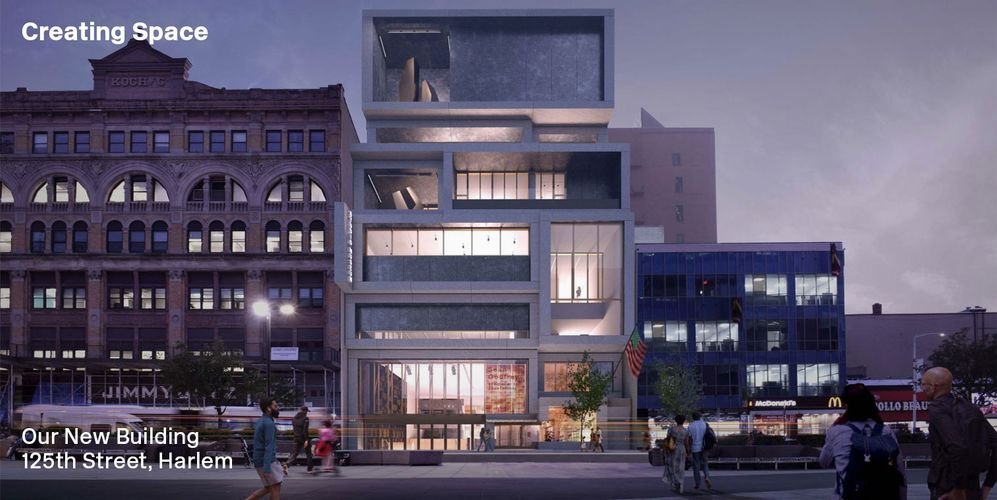
Studio Museum
Studio Museum
144 West 125th Street, New York City, New York 10027, United States
The Studio Museum is a space curated with the works of artists of African descent. Founded in 1968, the museum collects, preserves and interprets art created by African Americans, members of the African diaspora, and artists from the African continent. It has many free events and exhibitions available to the community.
-

The National Jazz Museum
The National Jazz Museum
58 West 129th Street, New York City, New York 10027, United States
The mission of the National Jazz Museum in Harlem (NJMH) is to preserve, promote and present jazz by inspiring knowledge, appreciation and the celebration of jazz locally, nationally and internationally.
Open Hours: Thu-Sat 12 PM - 5 PM
-

The Oxford Dictionary of African American English: First 100 words
The Oxford Dictionary of African American English: First 100 words
New York City, NY, United States
African American English has had a profound impact on the world’s most widely spoken language, yet much of it has been obscured. The ODAAE seeks to acknowledge this contribution more fully and formally and, in doing so, create a powerful tool for a new generation of researchers, students and scholars to build a more accurate picture of how African American life has influenced how we speak, and therefore who we are.
-
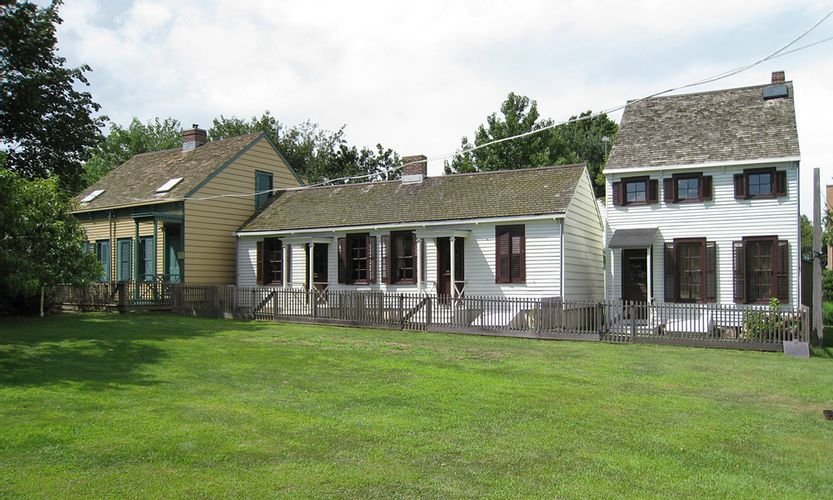
Weeksville Heritage Center
Weeksville Heritage Center
158 Buffalo Avenue, Brooklyn, New York 11213, United States
Weeksville was one of the largest free Black communities in pre-Civil War America, including the Historic Hunterfly Road Houses. The Weeksville Heritage Center is a historic site and cultural center in Central Brooklyn that uses education, arts and a social justice lens to preserve, document and inspire engagement with the history of Weeksville.
Open Hours: 10 AM-5 PM
-

Will Marion Cook House
Will Marion Cook House
221 West 138th Street, New York City, New York 10030, United States
Will Marion Cook was an internationally renowned violinist, composing and performing from 1918 until his death, in 1944. Cook studied music at Oberlin College in Ohio and at the National Conservatory of Music in New York. Later, Cook's New York Syncopated Orchestra toured Europe, playing classical music and introducing audiences to American Jazz. He was a major influence on iconic musicians such as Duke Ellington and Josephine Baker. His home was declared a national historic landmark in 1976.
